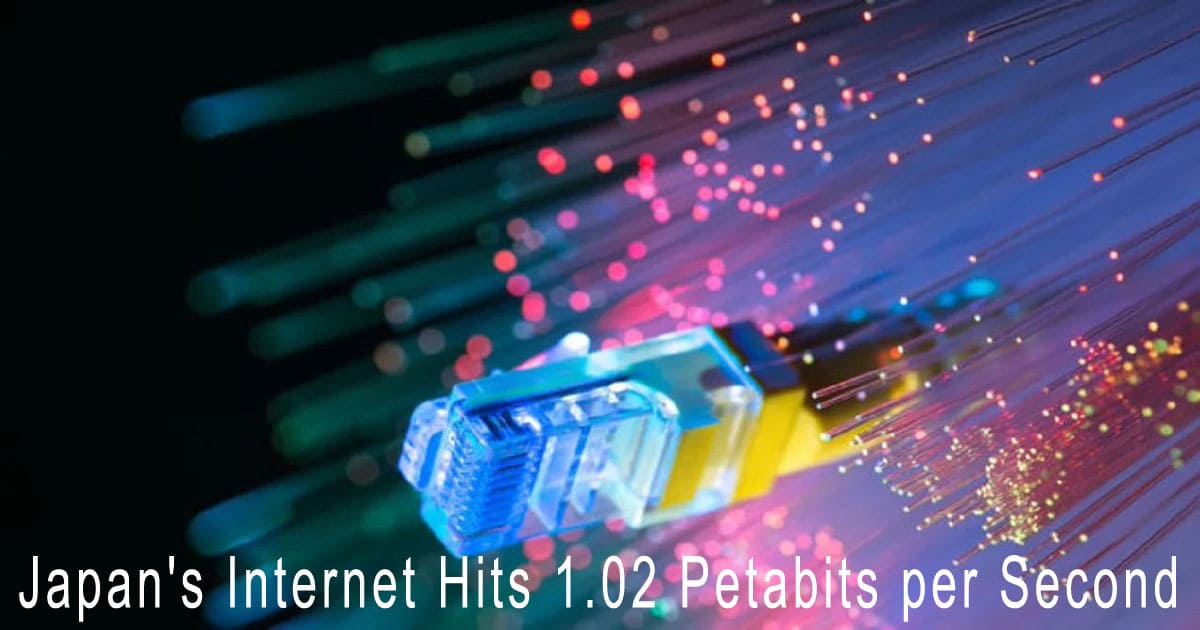Japan’s Internet Hits 1.02 Petabits per Second – Japan’s National Institute of Information and Communications Technology (NICT) recently hit a major milestone by transmitting data at 1.02 petabits per second. That’s over 1 million gigabits per second—or about 127,500 gigabytes every second. Many headlines claim this means you could download “everything on Netflix in one second.”
But is it really that simple?
Let’s break it down—no clickbait, just facts.
Japan’s Internet Hits 1.02 Petabits per Second—Download Every Netflix Movie in a Second? Here’s the Real Story
What’s Behind the 1.02 Pbps Speed: 19-Core Fiber and 1,800 Km Simulation
NICT developed a special 19-core optical fiber, a major leap from the single-core fibers most networks currently use. Each core functions like an independent channel, transmitting multiple data streams at the same time. Despite its advanced architecture, the cable still fits into the standard 0.125 mm diameter, keeping it compatible with current infrastructure.
To enhance performance even more, the team utilized over 350 different light wavelengths across the fiber cores. Instead of a short burst, the data traveled a total of 1,808 km through 21 fiber loops, each measuring 86.1 km. That’s about the same distance as Tokyo to Shanghai—proving the system’s speed and scalability over long distances.
How Much Data Is 1 Petabit/Second, Really?
Large numbers like 1.02 petabits per second can feel abstract, so let’s break it down:
- 1 petabit = 1,000,000 gigabits = 125,000 gigabytes
- A typical HD Netflix movie = 1.5–3 GB
- Netflix’s global catalog (2024) ≈ 15,000 titles
- Estimated total size ≈ 100 TB (100,000 GB)
In theory, you could download the whole Netflix library in less than a second at this speed. Of course, this assumes flawless conditions without bottlenecks—something only achievable in a lab. Still, the possibilities are mind-blowing.
Beyond the Hype: Practical Applications and Real-World Impact
Let’s explore what this really means outside the lab:
- Ultra-HD Streaming: Users could stream 4K or 8K content on multiple devices without buffering—even in busy cities.
- Gamers will value quick responsiveness even during hectic multiplayer sessions because of zero-lag cloud gaming.
- Smart Cities and IoT: Large sensor networks, traffic controls, and city-wide infrastructure could operate more efficiently.
- Next-Gen Infrastructure: This lays the foundation for 6G networks, which will rely on ultra-fast fiber backbones.
Because the 19-core fiber retains a standard size, network operators can deploy it along existing cable routes—no need for expensive or disruptive upgrades.
Why You’re Not Seeing This at Home (Yet)
Despite the breakthrough, consumers won’t experience these speeds anytime soon. The team ran this experiment under strict lab conditions:
- To preserve the signal power, engineers employed lab-grade optical amplifiers.
- They closely monitored the environment to avoid packet loss
- The setup required specialized decoding gear and substantial power
To roll this out to the public, several steps must happen:
- Manufacturers need to mass-produce multi-core optical fibers
- Engineers must design affordable transceivers and compatible hardware
- The industry must standardize multi-core technologies across global telecom networks
- ISPs and governments must make significant infrastructure investments
In short, we’re still years away from mainstream adoption.
The Road Ahead: Real Innovation, Not Just a Lab Stunt
Some critics might call this just a flashy lab success—but this achievement signals something much bigger. While consumers won’t immediately benefit, the innovation in optical design—especially dense multi-core fiber—opens doors for:
- Data centers managing growing global traffic
- Financial firms requiring real-time international transactions
- Healthcare systems handling high-resolution imaging and remote diagnostics
- Academic institutions sharing large-scale simulation data or AI training models
In other words, this breakthrough isn’t just hype—it’s a key building block for tomorrow’s internet.
Final Thoughts: Mind-Blowing Speed, Grounded Reality
Sure, “downloading all of Netflix in one second” makes for a compelling headline. But the real story lies in how advanced fiber-optic technology has become—and how it positions us for the massive digital demands of the future.
If you’re a tech enthusiast, engineer, or simply someone curious about internet evolution, this milestone is a window into what’s coming. And while we may not experience it firsthand today, one thing’s clear: the internet is evolving to be faster, smarter, and more powerful than ever.



